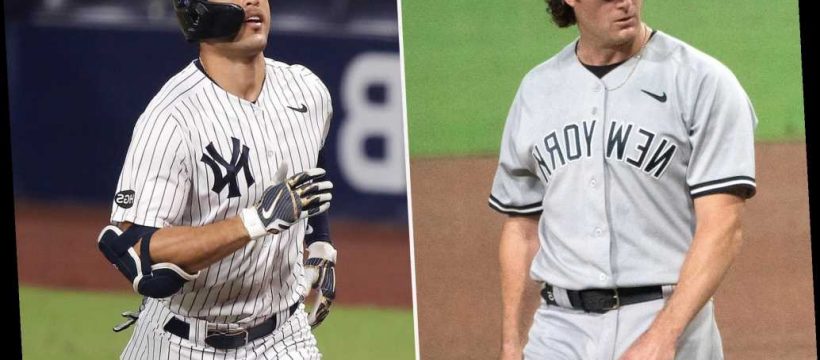The Yankees’ greatest advantage over the Rays actually has played out. Gerrit Cole and Giancarlo Stanton are the kind of players who Tampa Bay does not even convene meetings to discuss acquiring.
It would be like a squeegee man having a sit-down with a realtor about a Hamptons mansion. Why bother? One of the great ironies in baseball is that the Rays have a manager named (Kevin) Cash.
Conversely, the Yankees could in the span of 24-to-48 hours pivot from the disappointment of being told Shohei Ohtani would not be joining the organization to trading for the final 10 years of what was then a record contract for Stanton.
The Yankees could go two seasons longer than they had planned to bid in signing Gerrit Cole to a nine-year, $324 million contract, a record for a pitcher in both total money and average per year.
In 2020 — had there been a full season — Cole and Stanton were due $62 million, or about $10 million less than the Rays had budgeted for their whole roster.
And the money has played this postseason. The Yankees have three playoff wins in five games and Cole had two of them. Stanton had homered in all five games.
Cole was doing a strong imitation of CC Sabathia in 2009, the high-priced free agent starter fronting a postseason staff in his first Yankee season. Stanton was mimicking Alex Rodriguez the same year — the slugger who forced his way to New York via trade while possessing the largest contract in the game and finally won over the home fans with postseason brilliance.
But the Yankees won a title — their most recent — in 2009 when the money played out that way. Cole and Stanton have been the Yankees’ best pitcher and best hitter this postseason and still the Yanks were looking at winter as they continue to be outclassed in 2020 by an organization that does so much more with less.
Now, payroll discrepancies are often a tired narrative. Most players artificially have their salaries restrained in their prime by what the reading is on their service-time odometer. I wonder, for example, what Nick Anderson, Randy Arozarena and Tyler Glasnow would get in a non-COVID-impacted free-agent market. Probably more — lots more — than the Rays would comfortably be willing to pay.
But this is the system, and no one uses it quite like the Rays to make every penny matter. They have far fewer stars than the Yankees, yet all indications — Tampa Bay was 11-3 vs. the Yanks in their first 14 games this year — are the Rays have a better team.
There is no one reason for this, but the No. 1 reason is that Tampa Bay is better at developing pitching. Low-payroll teams such as the Rays and Indians — the Yanks’ opponents in the first two rounds — excel because of the ability to either raise strong pitching up through the system or turn stuff found on the junkheap into quality assets.
The Yanks hired Matt Blake away from Cleveland as pitching coach to try to find that success. One bizarre, shortened year is not a fair term to deliver an accurate grade. But it isn’t like the major league staff in 2020 got better after the dismissal of veteran Larry Rothschild. The Yanks hired Sam Briend away from the data-driven force Driveline Baseball to oversee the Yankees’ pitching development.
Blake and Briend face pressure to produce more trustworthy arms. For the money has not played in the rotation behind Cole this postseason. J.A. Happ and Masahiro Tanaka have performed poorly and James Paxton and Luis Severino were out with injuries. All but Severino are free agents. Perhaps Tanaka will be back on a diminished contract. But expect the Yanks to try to save money in this area — Rays style — behind Cole and Severino with Deivi Garcia, Domingo German, Michael King, Jordan Montgomery and Clarke Schmidt.
The Yanks have boasted about a lot of big arms in their organization. But there has to be more than big arms. The Rays take big arms and tend to translate them into their best use — often better than any place else those pitchers have been. It is how a manager named Cash looks like he has so many million dollar arms on a shoestring budget. It is how a financial David tames a deep-pocketed Goliath.
Share this article:
Source: Read Full Article

